Repairing the Land – A True Work of Passion
Host: Country Downs Station
Written by Nikki Elizovech, Station owner/manager
As I mentioned yesterday, there were many parts of Emu Creek that have been degraded over time and even though some forms of rehabilitation have been undertaken about 15-20 years ago, the hangover from the sheep days is still obvious and in need of rectifying. In addition to degradation, the river system has a Parkinsonia weed problem which an annual program to eradicate has been undertaken over the last few years. We also found that the 100yr old rubbish tip/scrap heap has a Coral Cactus infestation which is a massive problem in some areas in the Pilbara and Gascoyne. The LCDC’s in the area have been working very hard at developing a reliable methodology of eradicating these and we were more than happy to help them in their efforts to get rid of this prolific pest weed species. Today I would like to talk about some of these programs and community groups that enable us, as producers, to tackle such issues in our land systems and the good work and knowledge that comes out of the efforts that many people put in to caring for our land.
As soon as we arrived, we enlisted the help of Rangelands NRM to carry out an Ecologically Sustainable Rangelands Management (ESRM) Plan in conjunction with landscape scientist, Dr Richard Glover (Contour Consulting), to determine what parts of the property need work, are at significant risk or sensitivity and also to look at the current situation on the property and to ascertain the viability and sustainability of any developmental projects that may be able to be implemented in the future. We had previously done an ESRM on Country Downs and know how useful this tool can be to making decisions on your property that factor ALL possible issues, potential problems and the beneficial outcomes of any future action plan. We were also very lucky to be able to pick the brains of the founder of the Ecosystem Management Understanding (EMU) program, Dr Hugh Pringle, to gain more knowledge on what actions need to be taken to reduce the process of degradation so that we can then turn that around to building the land systems up again, but utilising both mechanical and ecosystem functions to do so.
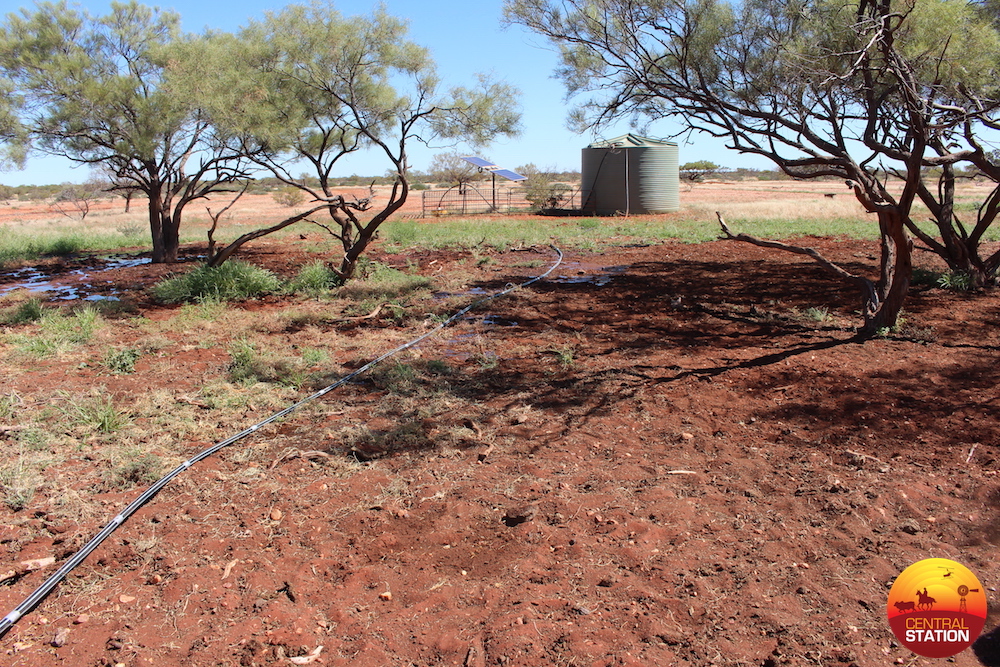 One of the regeneration projects we undertook. The solar pump had excess water being pumped into the tank, so we diverted the excess onto the ground to increase growth of any kind of ground cover. Behind the tank and panels is what the area in front of the tank used to look like.
One of the regeneration projects we undertook. The solar pump had excess water being pumped into the tank, so we diverted the excess onto the ground to increase growth of any kind of ground cover. Behind the tank and panels is what the area in front of the tank used to look like.
Degradation due to sheep is by far the major form of degradation on Emu Creek and will be the areas that take the longest to be rehabilitated, up to 10 years. Despite this, we had noted that much of the riverine areas (ie those in and alongside the river) were also degraded due to year-round grazing pressure. The riverine areas on Emu Creek are the most productive and thus popular areas on the property and as such, with no fences to keep livestock off these areas at critical times of the year, historically these areas have been quite ‘flogged’ (over-grazed) by livestock leading to loss of ecosystem function. As a result of the expert consultant advice, we believed that this would be the easiest aspect of our land rehabilitation program to conduct and see a relatively immediate result (ie within a year or two!!). So, we set about developing a project to fence off the river to the rest of the property so that we were able to ‘spell’ (ie rest) those more palatable and popular areas over the main growing season to improve vegetation coverage, reduce soil loss and improve the water quality of the river system. We successfully applied for a State NRM (Natural Resource Management) Community Action Grant as a part of the Lyndon LCDC (Land Conservation District Committee) in late 2017. To the faint hearted, applying for a state government grant is a major undertaking which, without the help of people within Rangelands NRM and other previously successful applicants, would have never come to fruition. The application process took 5 months to complete and many phone calls and emails to ensure we were completing each step accurately and in the correct format. We are now in the infancy stages of implementing our “Emu Creek and Yannarie River System Remediation Project” and the grant that we will be receiving will pay for the fencing materials required to erect around 27km of fencing. The ultimate aim is to control grazing patterns in line with environmental and seasonal conditions in a holistic approach to repair and regenerate these areas and enable the sustainable use of the high value, yet quite sensitive ecosystem.
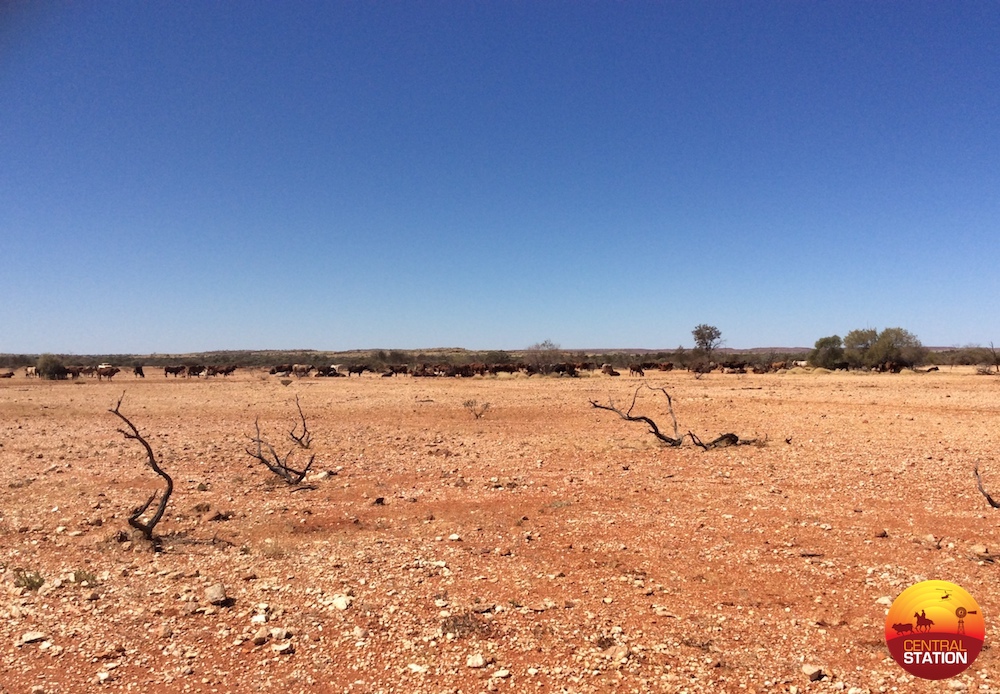
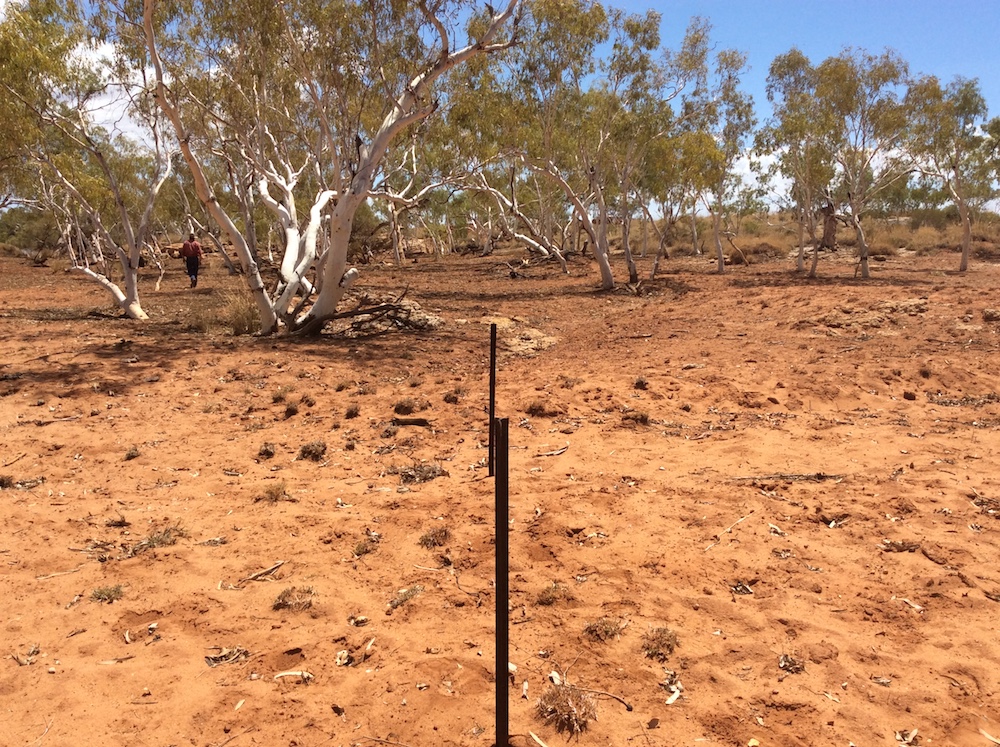
Without the grant from the State NRM, we would never have been able to complete this project in such a short amount of time. To date, we have not yet started the actual physical job of erecting the fence, but it will be happening within the next 2-3 months.
Another aspect of management of an area that is steeped in such history is the management of pest weed species. Whilst Emu Creek certainly doesn’t have as much of a weed problem as other stations in the Pilbara and Gascoyne areas, it still is plagued by a couple of weed species that are highly invasive, tenacious and prolific in their spread (typical weed characteristics!) and are proving to be very difficult to not only control but eradicate.
Like most stations that have been around for many years in the area, Emu Creek has a coral cactus problem that standard methods of eradication (ie herbicide mixes) have not really been very effective in eradicating it. The Coral cactus is a highly pervasive plant in that the tiniest piece can fall off the main plant and that piece will grow into another plant. The worst aspect is that a passing animal can dislodge these tiny pieces and carry them afar before it falls off their coat and starts growing again. This makes it very difficult to control. However, a few years ago the Lyndon LCDC received funding for a project to develop a spray mix that kills the entire plant. Having seen how ineffective standard spray mixes can be on the cactus, we were keen to become a part of the LCDC’s project and give the new, beaut’ spray a go. It worked well. But even better are the recent findings in biological warfare against this prickly weed using an insect to infest and kill the living plant. The cochineal insect (or ‘Cholla’) has been found to colonise and feed on the coral cactus, eventually killing the plant. With the rigorous testing that has taken place on the insect it has been found that they only colonise and feed on this cactus and does not survive on any others. With the help of Lyndon LCDC, we infected some of the larger plants with the cochineal insect and are now waiting to see the results. We still must keep on looking for new plants and monitor the existing infestations, however, using a biological control like the cochineal insect is by far a better option to the environment than standard herbicide mixes that can impact many non-target plants. All in all, advances in areas such as weed management is only getting better and better.
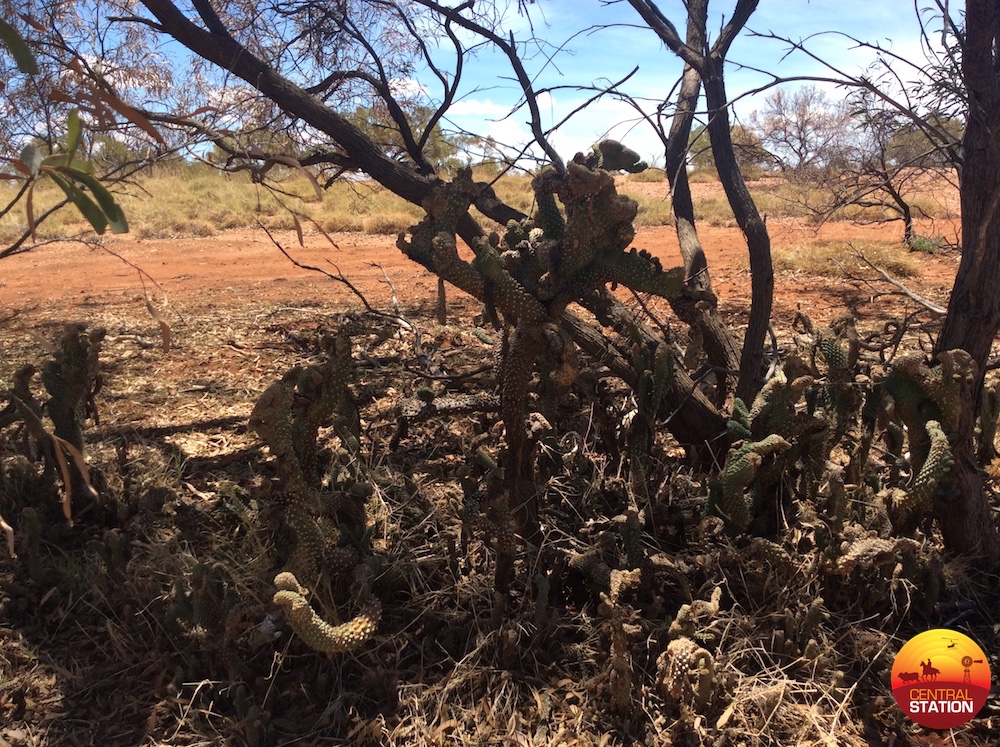
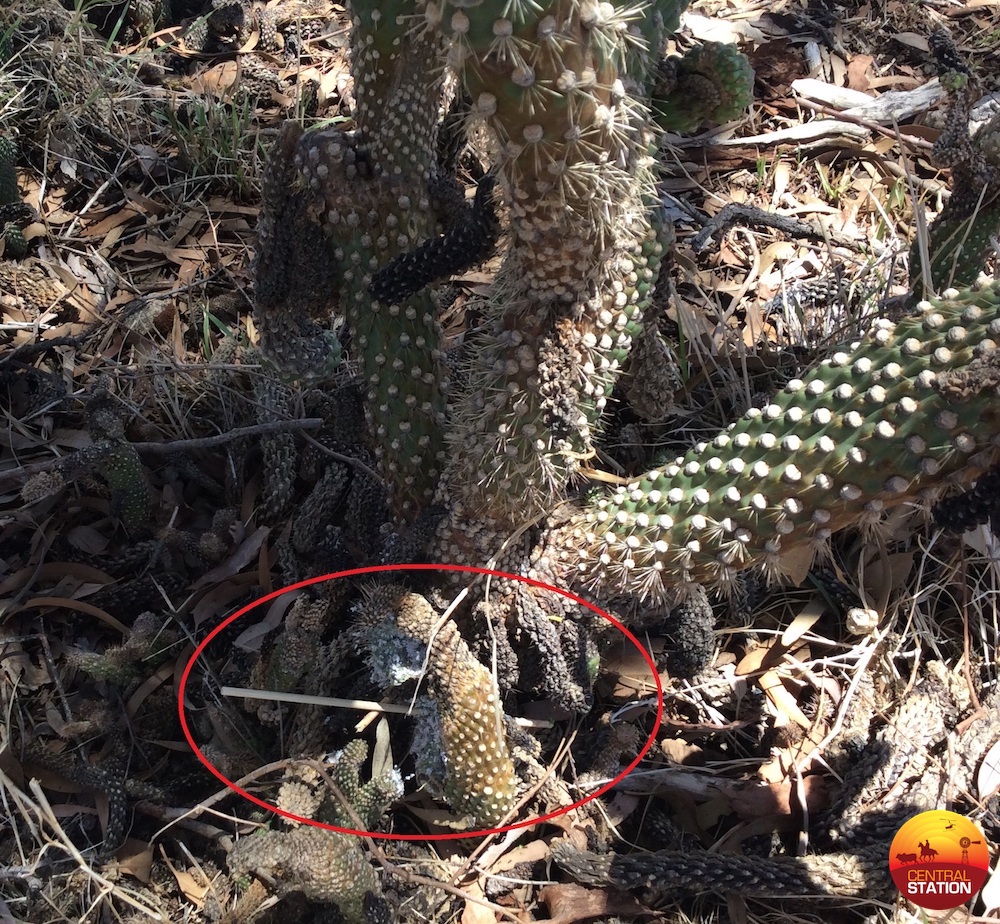
The other main offender in terms of weeds on Emu Creek is Parkinsonia aculeata, commonly known as Parkinsonia, which occurs along the banks of the Yannarie River. Parkinsonia is considered a ‘weed of national significance’ as it can have some significant impacts to the surrounding environment (namely replacing native plant species, erosion problems and feral animal refuge issues) when out of control infestations occur. As I said before, Emu Creek is very lucky that an annual spraying program has kept infestation to these levels at bay. The Pest Weed Management Program is run on an annual basis early in the year (to make use of the plants ‘growing’ season) and is run by the Pilbara Mesquite Management Committee (PMMC). This is a not-for-profit organisation based in Karratha that runs many different weed management programs on stations, Department of Parks and Wildlife areas, shire and other government managed lands to achieve regional objectives.
The work that PMMC is doing to address the Mesquite and other invasive weed infestation areas is nothing short of amazing. Whilst we haven’t yet eradicated Parkinsonia from Emu Creek, through advances in technology we are becoming better at monitoring the infestations and as such are becoming more effective with each annual spraying program. An example of the innovation in our technology is a newly developed app for participants of the weed management program. Basically this new app allows us, as the land managers, to take pictures of any new plant found, input a couple of details about the identified weed and upload into a monitoring database that can be checked and updated by PMMC staff and monitored on a regular basis to determine if the spraying program is working, what the plants are doing on a monthly and seasonal basis and whether we need to be changing any of the management strategies already in place….. all at the click of a couple of buttons!!!
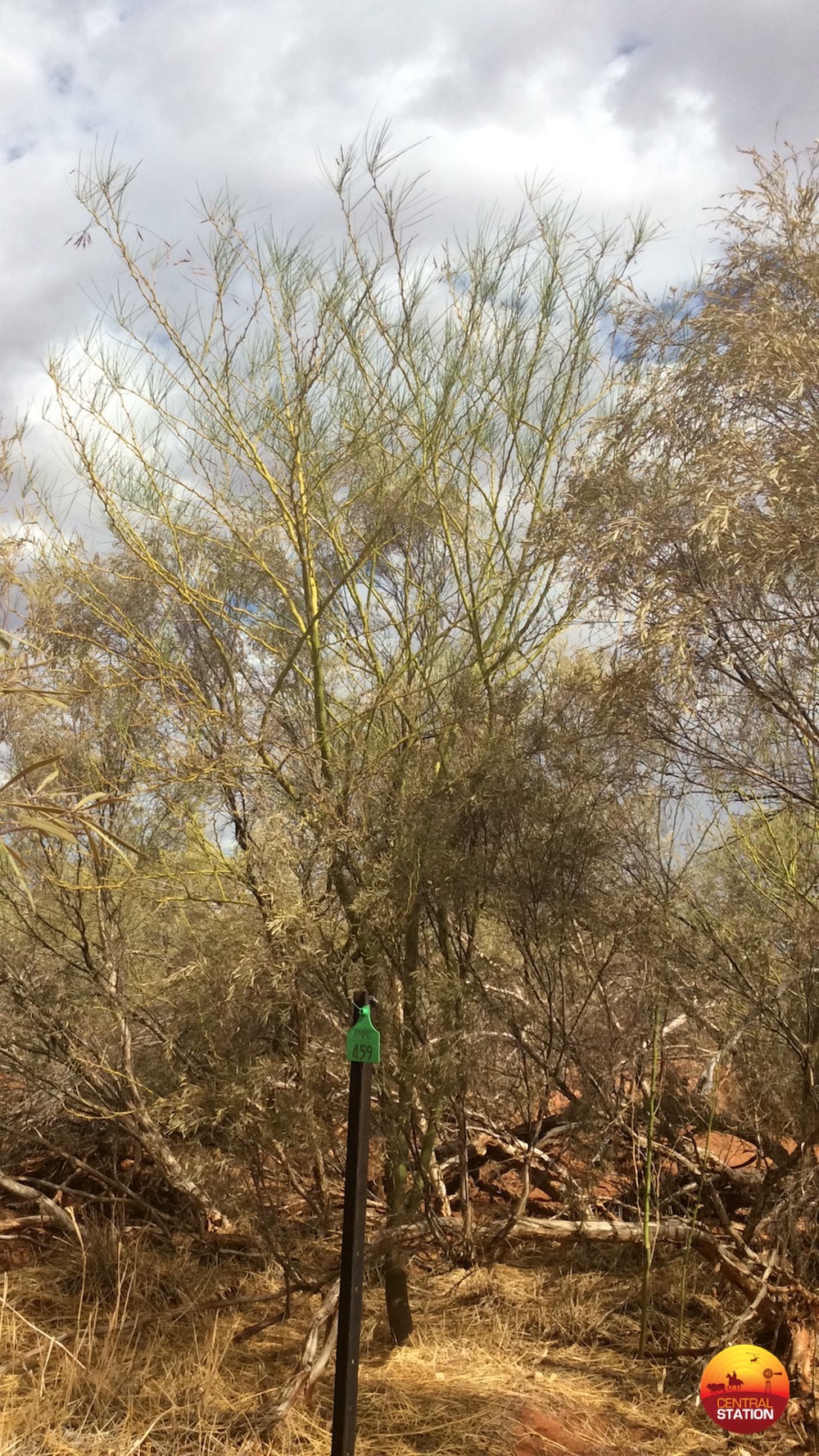
In recent years it has been amazing how many new forms of technology in the form of apps and software programs etc that are real game changers to how producers/pastoralists can effectively manage their enterprise at the business end. The development of the PMMC app is just one, but we are seeing more and more of these user-friendly, practical and cost-effective technological innovations being made available to us producers. Not all of them are useful to everyone and some are highly specific in their function and implementation that doesn’t suit the broader community. One other group that we were keen to become a part of whilst in the area is the Gascoyne Catchment Group (GCG). The GCG is a progressive group of pastoralists in the area that have always been keen to be on the front foot in terms of business development and natural resource management. They have undertaken many projects over the years and have the arduous task of getting together for their yearly AGM and discussions on the various projects and potential future developments in Coral Bay, WA! It was very difficult for us to spend a couple of days in Coral Bay late last year! One of the GCG’s projects that was completed last year was a monitoring app.
The GCG’s Monitoring Tool App was designed from the need that producers wanted a way to monitor and record the condition of their rangelands, and how it was changing, that was both meaningful and relevant to them and their properties. The whole development of the app took years of obtaining consultant advice on rangeland plants and rangeland condition monitoring and it was designed with pastoralists for pastoralists to ensure that it was easy to use, recorded appropriate data and would be recognised as a legitimate and useful tool by governing agencies. One of the best features of the app is the fact that land managers with access to the app can record vegetation and soil data directly into a tablet when in the field and the data would then download to the database when back in Wi-Fi range to be kept for future use and comparison. It also enabled historical data from years of rangeland condition reports undertaken by government agencies to be uploaded so that a general picture of the changes over the years can be ascertained. The development of such a useful tool could not have been achieved if it were not for the funding and support from the National Landcare Program (NLP) and Rangelands NRM, both of which have very supportive ideals when working with people on the ground in caring for our rangelands.
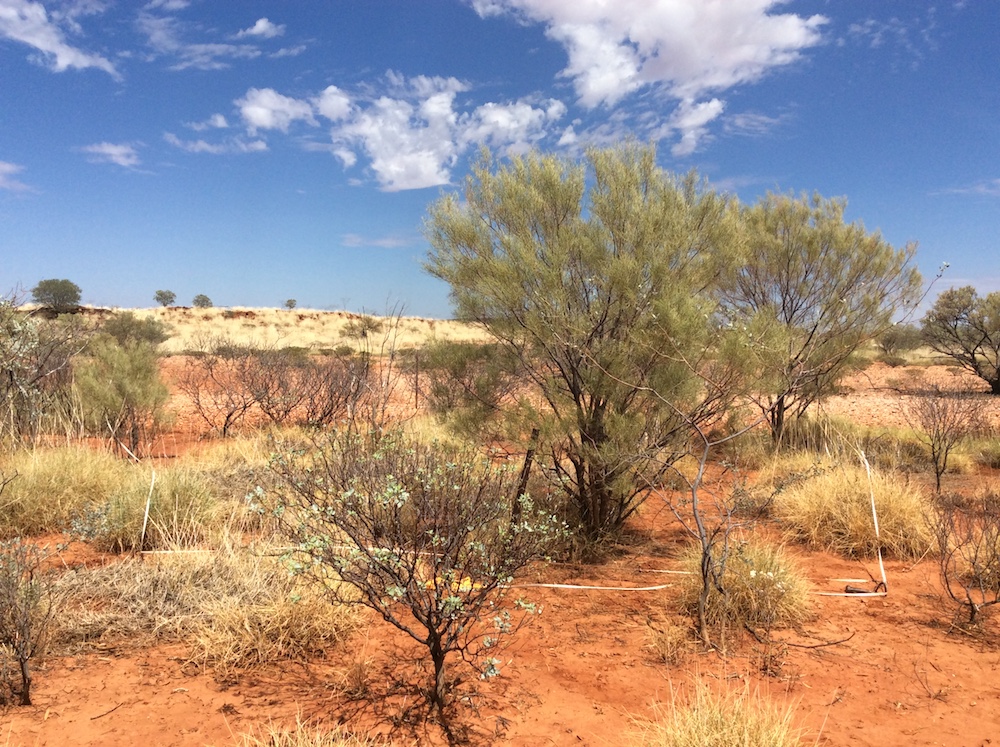
2017 really was a year that we stepped up our game in the ‘office’ side of things and the availability of even just these few tools that I have mentioned has made the consolidation of ‘in the field’ activities with ‘in the office’ activities a much easier, less stressful and more organised task. We are continually surprised and grateful for the new innovative technologies that keep coming out and believe that the next few years will see a major improvement in the ability for producers to fine tune and make their business more robust and efficient. We look forward to seeing what this will look like in, say, 10 year’s time. I will leave you today with the website addresses of the organisations that I discussed above for anyone who is interested in learning more about them.
https://pilbaramesquite.com.au
http://www.gascoynecatchments.com.au
